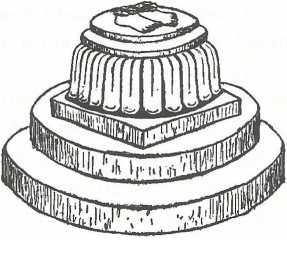Balipitha
Balipitha literally means a ‘pedestal for offering’
Balipīṭha or a pedestal where balis or food offerings are made, is an essential part of a Hindu temple. Situated usually near the dhvajastambha or the flagpost, but nearer the shrine, it is a raised platform made of stone, the height being generally one-eighth that of the garbha-gṛha or the sanctum sactorum. Materials other than stone, like metal, mud or bricks, may also be used.
The balipiṭha may be square, rectangular, octagonal, sixteen-sided or circular; and will have several tiers, each tier providing space for a particular class of celestial beings like the dikpālas (guardian deities of the quarters), apsarās (celestial nymphs), piśācas (goblins) and so on, to receive the food offered.
After the main deity is served with naivedya or food, the priests begin a procession for feeding the guardian deities and minor deities. The first one to receive the offering is the ‘balibera’ or the movable metallic image, which is then carried in the procession. After circumambulating the main deity, the food offering is kept on the balipīṭha.
Balis or food-offerings are given only in the temple worship and not in the worship at home.


